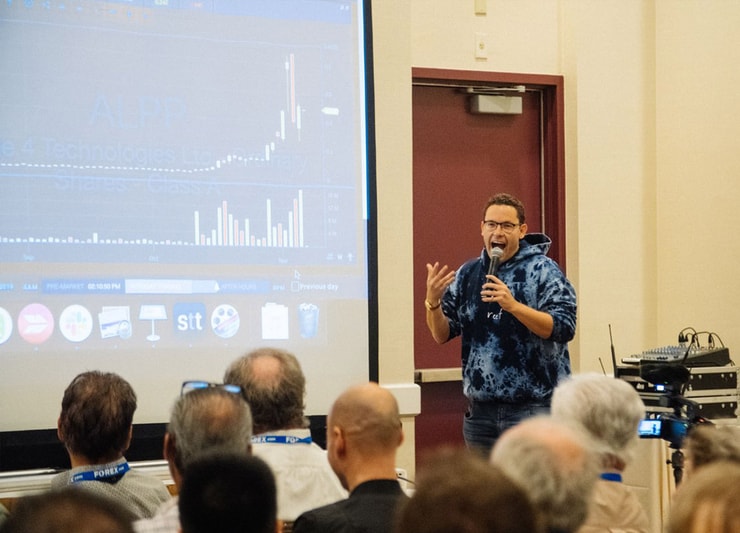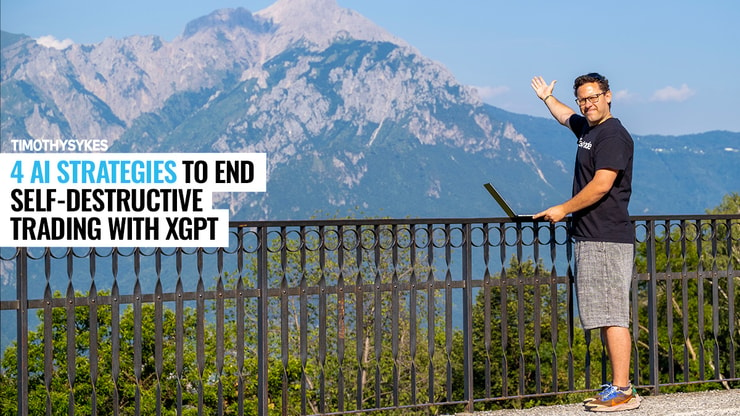Why do more than 90% of traders lose money if we all look at the same charts, read the same news, trade the same stocks?
It’s our own minds that get in the way.
It’s the psychological traps and biases that lead us down a path of self-sabotage.
That’s what makes AI tools like XGPT so powerful.
This game changing tool redefines the rules by allowing us to take emotions out of the equation.
Then, it goes a step further by sniffing out lucrative trading opportunities within the noise.
Take the case of ticker symbol CCCC: XGPT flagged it as a top pick, and rightly so. The stock leaped from $2.75 to $8.37, offering multiple winning moments for traders.
Discover how XGPT not only shields you from costly errors but also opens the door to massive trading opportunities…
Table of Contents
#1: Overcome Emotional Trading with Data-Driven Decisions

2025 Millionaire Media, LLCOne of the biggest challenges traders face is emotional decision-making. Even I fall victim to it from time to time.
Heck, it happened to me when I traded CCCC.
I was dead right when I initially took the trade on Tuesday morning.

However, when I traded it in the afternoon, I let my emotions get the best of me. And despite the stock surging by the close, I talked myself out of the position and ended up taking a small loss.

If a trader like myself with over $7.5 million in career trading profits can stumble and make emotional decisions…how bad do you think it can get for new and less experienced traders?
For some, they blow out their accounts before they can ever figure out how to control their emotions.
How XGPT Solves This Issue:
XGPT has no emotions.
It makes decisions based on data, trends, and statistical probabilities…
Not on fear or excitement.
For example, on Tuesday afternoon XGPT sent out an alert for CCC at $2.75.

On Wednesday the stock hit a high of $6.03…
Most traders including myself would be reluctant to trade CCCC after such a monster move…
But XGPT alerted CCCC again on Wednesday afternoon…

CCCC hit a high of $8.37 yesterday…reaching XGPT’s profit target.
#2: Breaking The Cycle of Overtrading
Overtrading often stems from the urge to recover losses quickly or the misconception that more trades equals more profits.
This horrible habit increases exposure to risk and can lead to significant losses.
Nice! Thanks, @timothysykes This is the kind of stuff I like to read that’s helping me get back on track (still down ~$1,600). That, and the amazing xGPT. cGPT has actually helped me out of a damaging overtrading habit.
— Kekoa777 (@KekoaForChrist) December 1, 2023
How XGPT Solves This Issue:
XGPT scans the entire market for you, and spits out an automated report each trading day. It highlights the top stocks based on a proprietary ranking system.
For example, Tuesday and Wednesday’s top pick was CCCC. A stock that experienced a monster move…surging by more than 200%
YESSSSSS $CCCC has now QUADRUPLED from my buys earlier this week & I must thank all the over-aggressive short sellers for making it happen. Thank you guys for your unending toxicity/narrow-mindedness & sacrifice for the greater good! Please never read https://t.co/jv0kL0BsvN
— Timothy Sykes (@timothysykes) December 14, 2023
Not only does XGPT find the stocks with the highest potential…but it also lays out a game plan on how to potentially trade them.
More Breaking News
- BTBT Stock Surge: What’s Behind the Spike?
- Lucid Group Strengthens EV Supply Chain with New Graphite Deal
- Symbotic Inc. Gains Momentum
This is critical for traders who suffer from overtrading because it can help them maintain a balance, ensuring that each trade aligns with a well-thought-out strategy rather than impulsive reactions.
#3: Eliminating Bias and Improving Decision Quality

2025 Millionaire Media, LLCHuman traders are prone to biases like confirmation biases or overconfidence, which can skew their perception and decision-making process.
Take short sellers in this market as an example. They are probably 99% right on their thesis…put it’s their overconfidence that gets them destroyed.
EVERY SINGLE PERSON SHOULD BE WATCHING PLAYS LIKE $VVOS $RDHL $CYTO AS THIS IS AN AMAZING BULL MARKET SO IT'S TIME TO PUSHHHHH AND REALLY BANK/LEARN. ALWAYS BE SURE TO THANK THE OVER-AGGRESSIVE SHORT SELLERS WHO HELP MAKE THESE AWESOME SPIKES HAPPEN, THEY ARE THE BEST PROMOTERS! https://t.co/MKzLBfyWkC
— Timothy Sykes (@timothysykes) November 30, 2023
How XGPT Solves This Issue:
It processes information and recognizes patterns based on objective analysis, not subjective beliefs or past experiences. This unbiased approach can lead to more consistent and reliable trading decisions.
#4: Consistent Application of Risk Management Principles

2025 Millionaire Media, LLCOne of the reasons why short sellers are getting destroyed in this market isn’t because they have bad ideas…
It’s because they are stubborn and lack any type of risk management skill.
They often ignore stop-loss orders or risk more than they should on a single trade because they feel like they will eventually be right.
How XGPT Solves This Issue:
XGPT comes with its own set of risk management rules…
It clearly defines levels of support and resistance. As well as, what area you should look to cut losses.
This consistency ensures that risk parameters are always followed, protecting traders from unexpected market swings and emotional decision-making.
Transform Your Trading with XGPT: Exclusive Presentation! 🌟

2025 Millionaire Media, LLCStep into the future of trading with XGPT’s AI-driven insights.
This isn’t just another tool; it’s a complete paradigm shift in how you approach the market.
📈 Harness Advanced Pattern Recognition
🤖 Embrace Unbiased, Data-Driven Decisions
📊 Develop AI-Informed Trading Strategies
🚀 Navigate Real-Time Market Dynamics
📰 Analyze Deep Market Sentiments
Join me for an exclusive presentation where we unveil how XGPT has been changing the game.
Discover its role in identifying high-potential trades like CCCC and learn how it combats common trader challenges such as emotional decision-making, overtrading, and bias.
Ready to see how XGPT can revolutionize your trading experience? 🚀
👉 Sign Up for Our Not-to-Miss XGPT Presentation Now! 👈









Leave a reply